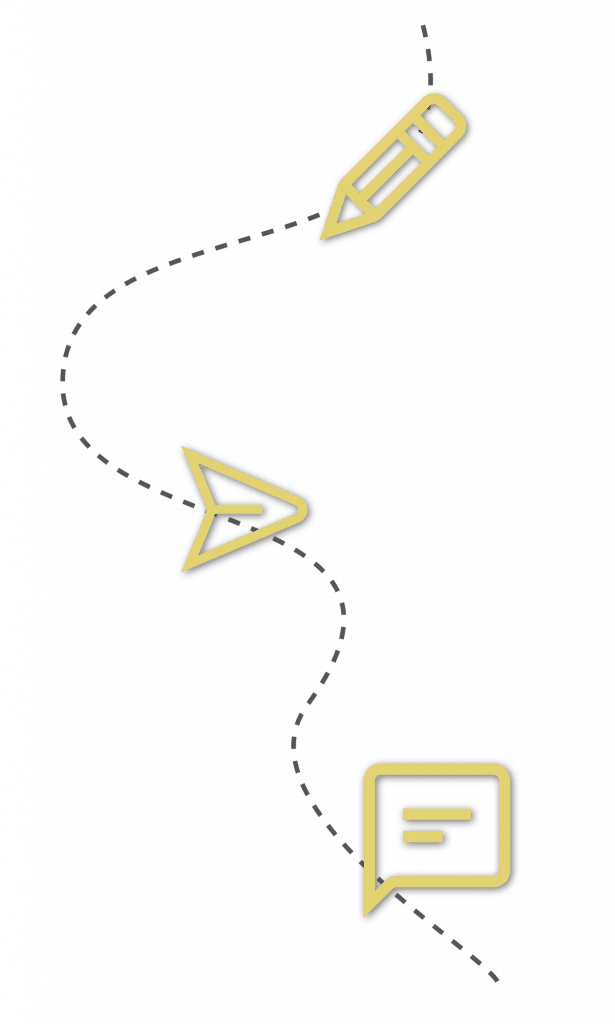Have you ever considered that if you’re in sales, you most likely have a sales process flowchart running through your mind?
We all do, even if we don’t necessarily think about it like that. The idea here is that we each have a sales process flow chart template that we follow seemingly instinctually. I’d argue though, that what feels instinctual now is simply a conglomeration of all of the training and experience you’ve had that all melds into one unique process.
Inside sales process flowcharts, we can often find elements of these unique processes that need to change, but we continue to do them anyway. Just like how a bad habit forms, which ends up feeling instinctual, each bad sales habit is due to repeated missteps based on prior experience.
Depending on the level of these negative aspects of the sales process definition rattling around in your head, and the coaching you receive, letting these sales process model misguidances fester could be holding you back from leveraging a systematic sales process that takes your close rates—and quota—to the next level.
In this post, we’ll talk through a few ideas that can help you uncover what missteps are present in your mental sales process template and give you some tips to come up with solutions for them.
To get started, here’s a lightly detailed sales process outline that may represent the core elements of your mental model:
- Prospecting to find potential customers.
- Note: This part may have its own subsection detailing out your lead process flow chart, or to take it even further, you could describe how your work with your marketing team in a sales and marketing process flow chart. This is not a necessity for the process we describe below as most of this post is strictly about the sales side of the equation, but it might be worth doing in the future as a separate project.
- Preparation to find out a potential customer’s needs and as much about them as possible before moving forward.
- Approach the prospect with information about what you offer and how that will help them do their job better.
- Present them with a proposal detailing what you offer and what they should expect to pay.
- Navigate their concerns and objections.
- Close the sale with a finalized contract.
- Follow-up with continual and excellent client success work.
Documenting Details

If everyone were to follow the above sales process example, everyone would still have different results because it’s not very detailed. The first step in understanding what’s holding you back in your process flow is to document every step of your mental process in detail. Take 20 minutes to write out an outline of every single step and decision point you typically take in order to successfully close a deal
After doing so, some folks will come out of that exercise with a 10-step sales process, others may have an 8-step sales process, but you may have more or less. It really doesn’t matter how many stages of sales process you include, what matters most is that now you can see the entire flow.
Uncovering Errors
Now that you’ve documented your sales process, it’s time to review what should change. Take the next 10 minutes to review each line in your outline and give it a rating of 1-5 on a scale of how strong you think it is. 1 means it needs a lot of work and 5 means it operates smoothly.
This next part is critical. Take that same outline, remove your scores, and share it with a handful of colleagues and mentors that can help hone you. Ask them to give each part of the process a 1-5 scale just as you did before. In order for this to go well, you will need to have a lot of detail in your outline, and possibly even have to give a full-blown sales process presentation in order to get them up-to-speed to understand what you mean by each part. This is worth whatever work you put into it because the entire point of this post is that we have a sales process flowchart in our head and we need external help to know how it should improve.
Compare what you gave yourself as a rating and what others gave you as a rating. Hopefully, you will be able to pull out some key takeaways from the differences.
As you evaluate who to include in your external evaluation, consider that professionals in different industries may respond differently. A B2B sales process flowchart or even a lead generation process flow chart may never come close to representing anything similar to a construction sales process or retail sales process flowchart. This fact should be celebrated though and you should lean into it. If you’re not in the B2B space or knowledgable about B2B sales strategy, having someone evaluate your process against B2B sales cycle stages could be immensely valuable as they will be thinking about things in seemingly new ways to you. We often find that cross-pollinating across industries is a fantastic source for growth on both sides of the conversation.
Positive Growth

You’ve documented your sales process, you’ve evaluated what needs to change, now the rubber meets the road—what will you do next? We recommend the next steps to drive positive growth in your process and lock in change:
- Write a brand new sales process flowchart with changes from your existing flowchart based on your evaluation and that of others.
- Document the differences as well as specific steps you’ll accomplish in order to bridge the gap between your original flowchart and your new one.
- Assign a due date for each of these actions and ask a colleague or mentor to help hold you accountable to getting each done.
- After you’ve operated within your new sales process framework, run this entire process over again. Rinse and repeat.
One last, quick note with regard to documenting things: It’s important to acknowledge that there are many ways to document your sales process template. Excel, Word, or Powerpoint (or the Google Doc equivalent if you’re using Google) are great options. You can also use graphic design software like Adobe Illustrator or Pixlr, but those frankly just make this more complicated. The point is, you need to clearly choose what system you’ll use over time so that you can have a quickly editable flowchart template. You’ll need to use and reuse this to optimize your sales process following the same procedure above over and over again, so make sure you’re comfortable with the software, and that it can be accessed on the go.
Happy selling!



